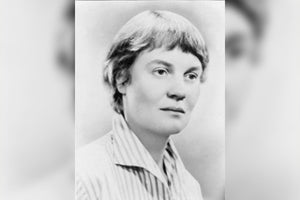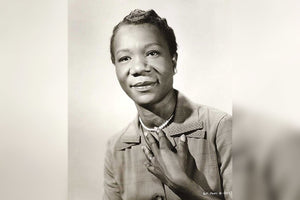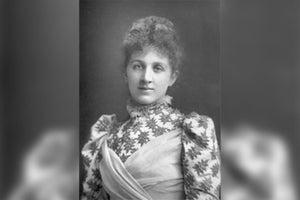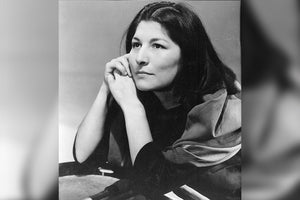Birthday- June 12 1929
Who is Anne Frank?
Anne Frank was a German-Dutch diarist with Jewish origins. She is popularly known for the book; The Diary of a Young Girl is among the most discussed victims of the Holocaust.
Five Facts about Anne Frank
1. She died at the age of 15.
2. She became popular after her death.
3. She became stateless when she lost her German citizenship in 1941
4. She and her family hid behind a hidden room in the building where her father worked for years.
5. Her father discovered her diary through his secretary.
Inspirational Quotes from Anne Frank
"Despite everything, I still believe that people are really kind-hearted."
"Think of all the beauty still left around you and be happy."
"In the long run, the sharpest weapon of all is a kind and gentle spirit."
"What a wonderful thought it is that some of the best days of our lives haven't even happened yet"
Anne Frank Biography
Early Life
Anne Frank was born as Annelies Marie Frank in Frankfurt, Germany, on June 12, 1929. Her mother was Edith Hollander, while her father was Otto Henrich Frank. Before her birth, the couple had an older daughter named Magot.
The Franks did not follow the traditions and costumes of Judaism because they were liberal Jews. Prior to the Holocaust, they lived in a community where non-Jewish various religions and Jews co-exist harmoniously.
Turning Point
In 1993, the Nazi Party of Adolf Hitler won the election, and he was seated as the Chancellor of the Reich. During this time, Anne's family were staying with her grandmother while her father remained in Frankfurt. Otto, Anne's father, was asked to start a company in Amsterdam, which resulted in the family permanently relocating to the city where their father worked. During this time, Otto was working in Opekta Works.
A few years later, he opened a second company named Pectacon, and his mother began living with the family. Germany began its invasion of the Netherlands in May of 1940. This also marked the beginning of the prosecution of Jews implemented due to the discriminatory and restrictive laws. Otto tried to transfer his family to the United States but was not given a visa due to several circumstances.
In July of 1942, the family was forced to go into hiding above Otto's office. With Otto's most trusted employees help, they were able to remain hidden for 761 days.
Time Period Chronicle In the Diary
Life in the Secret Annex
On July 6, 1952, just right after Anne's 13th birthday, her family moved into their hiding place, which is known as the Achterhuis, which literally translates into the secret annex. They left their apartment in disarray, including Anne's cat, to make it seem like they suddenly left. Her father also left a note saying that they were moving to Switzerland in hopes of covering their tracks.
While they were in hiding, her father's employees helped conceal their presence by providing them with basic necessities such as food and water. They were their only connection to the outside world and only source of information about political developments and war news.
Later on in their confinement, they were joined by the Van Pels, who were close friends of the family. At first, Anne was delighted to have new people to talk with. However, as time passed, the different personalities and confinement effects made the arrangement challenging.
In Anne's diary, she examined her relationship with her family and noted the strong difference between their personalities. She considered her father as her closest confidant while her sister was closer to her mother.
In her diary, Anne showed a brave and courageous character.
She was optimistic and hoped that after the war, she and her sister could go back to school and pursue a journalism career. Unfortunately, In August of 1944, the Secret Annex was discovered by the Grune Polizei. Anne's family, along with their companions, were captured and arrested. Those who aided in their hiding were interrogated but luckily escaped capture.
The family was sent to Auschwitz, where the women were separated from men. Anne, her sister, and mother endure hard labor and poor living conditions, which resulted in Anne developing scabies and their mother dying of Starvation. Later on, her sister fell ill and died after falling from her bunk bed. A few days later, Anne followed.
The only living survivor of the family was the father, Otto Frank. When he returned to the Secret Annex after he was released from Auschwitz, his previous secretary, who was also among their helpers during their confinement, gave him Anne's diary. The diary was published in 1947 with the original title "Het Achterhuis"
Legacy
In 1960, the Anne Frank House opened. Otto Frank and Elfriede Geiringer-Markovits, his second wife, established the Anne Frank Fonds, which is a charitable foundation. It helps educate young individuals about racism.
Over the years, Anne Frank's life story and writing have inspired social commentators and artists who referenced her in television, popular music, literature, and other media forms. There were even several movies about her story.
![]() Fast Shipping
Fast Shipping![]() Subscribe to our Newsletter
Subscribe to our Newsletter![]() 🌟 New Global Competition 🌟
🌟 New Global Competition 🌟















